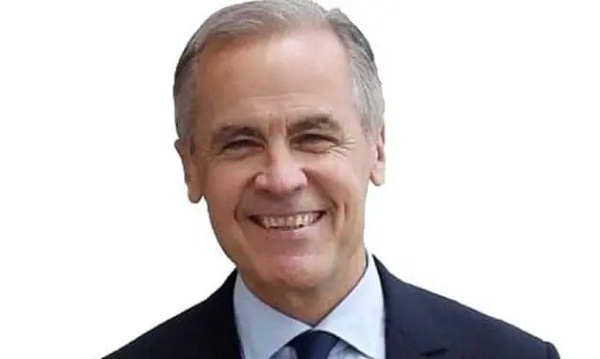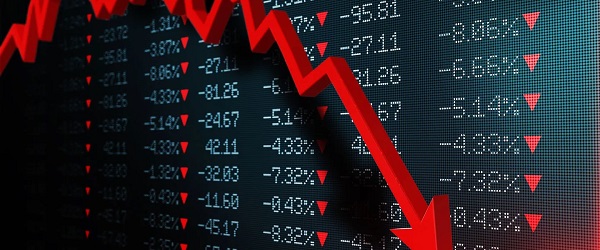Uncategorized
Dr. Malone: ‘Disease X’ is manufactured by the WHO to drive fear and public compliance

Building of the World Health Organization in Geneva, Switzerland
From LifeSiteNews
Don’t be fooled by Disease ‘X’ or ‘Y’ or ‘Z.’ These aren’t real diseases. They are being weaponized to acceptance of the transfer of both funding and authority to an unelected globalist non-governmental organization – the WHO.
I have been working in the public health sector for over 30 years. This includes a fellowship at Harvard and numerous other courses on bioethics. In all that time, there has been one clear message: for the emotional and physical wellbeing of the public, the government and public health must not incite fear without cause, and that to do so is unethical and immoral, akin to yelling “fire” or “active shooter” in a crowded movie theater. That public trust requires transparency and truth telling on the part of public health officials and government.
The CDC codifies this basic premise in their public health risk communication statement:
Be first, be right, be credible. That’s the mantra for crisis communication. Health communicators, whenever a crisis occurs, always be prepared to provide information to help people make the best possible decisions for their health and well-being. [Emphasis added]
READ: WHO’s Dr. Tedros says new global pandemic is matter of ‘when’ not ‘if’ at 2024 Davos summit
In 2018, the World Health Organization came up with the idea of “Disease X,” which is a placeholder for a disease that could be a potential cause of a future major epidemic or a pandemic. The original idea being that planning for an (imaginary) “Disease X” would allow for scientists, public health officials, and physicians to design the best possible practices for a future epidemic or pandemic. They then formally added “Disease X” (an imaginary disease) to the top priority list of pathogens.
The idea behind Disease X was later weaponized to create a fog of fear in the public as well as governments. The weaponization started with COVID-19 communications. In a 2021 study, it was found that the “the only predictor of behavior change during COVID-19 was fear.” Despite their finding that such fear was related to a decrease in both emotional and physical wellbeing, the authors concluded that using fear to drive the public into compliance was the only path forward for public health. The authors write:
However, fear of COVID-19 was related to decreased physical and environmental wellbeing. Overall, these results suggest that ‘fear’ and anxiety at the current time have a functional role, and are related to increased compliance for improving public wellbeing.
‘Damn the torpedoes full steam ahead’
Without further questioning of the basic ethics behind using fear to drive compliance, this logic then became the consensus of public health officials and governments throughout the world. That being that the use of fear to get compliance for vaccines and vaccine mandates, vaccine passports, masking, lockdowns, social distancing, school closures, etc., was acceptable in the name of public health. That the decreased emotional and physical wellbeing of the general public by the promotion of fear tactics was an acceptable side effect.
Exit COVID-19… stage left. Enter ‘Disease X’… stage right
And just like that, “Disease X” has been substituted for COVID-19.
Without any qualms whatsoever, The World Health Organization (WHO) has gone from launching a global scientific process using Disease X as a model, to using “Disease X” as a propaganda driver to drive fear of an imaginary infectious disease. Then to use that fear to get public and governmental compliance for a new pandemic treaty, and more money for the WHO. Such weaponized fear (fearporn) also has been found to elicit more public compliance for public health measures, such as masking, social distancing, vaccines, and lockdowns.
The gradual shift was subtle. In April 2023, the WHO wrote:
Disease X represents the knowledge that a serious international epidemic could be caused by a pathogen currently unknown to cause human disease. The R&D Blueprint explicitly seeks to enable early cross-cutting R&D preparedness that is also relevant for an unknown ‘Disease X.’
In 2024, the WHO gave the general warning (without any data what-so-ever) that the imaginary Disease X could result in 20 times more fatalities than COVID-19.
Of course, there are some people who say this may create panic. It’s better to anticipate something that may happen because it has happened in our history many times, and prepare for it.
Bottom line is that Director-General Tedros now openly admits that the WHO is using fear to drive governments to open their pocket books and to drive compliance for the new pandemic treaty.
And the WHO’s fear mongering is working, the House recently introduced a new bill H.R.3832 – Disease X Act of 2023.
The bill reads:
This bill expands the priorities of the Biomedical Advanced Research and Development Authority (BARDA) to specifically include viral threats that have the potential to cause a pandemic.
In particular, the bill expands the scope of innovation grants and contracts that may be awarded by BARDA to specifically include those that support research and development of certain manufacturing technology for medical countermeasures against viruses, including respiratory viruses, with pandemic potential. It also expands BARDA’s authorized strategic initiatives to include advanced research, development, and procurement of countermeasures and products to address viruses with pandemic potential.
In order to understand the significance of this bill, it is important to understand what BARDA is:
(BARDA)’ is a U.S. Department of Health and Human Services (HHS) office responsible for the procurement and development of medical countermeasures, principally against bioterrorism, including chemical, biological, radiological and nuclear (CBRN) threats, as well as pandemic influenza and emerging diseases.
This bill is a sneaky backdoor to significantly expand the mission space of BARDA to include research into viruses. In the past, BARDA has been limited in their scope, so as to not compete with NIH. The expansion of yet another agency with very few limits on their scope is not in the public interest.
So, here is an easy ask. Contact your House representative and let them know how you feel about H.R.3832 – Disease X.
In the meantime, don’t be fooled by Disease “X” or “Y” or “Z.” These aren’t real diseases. They are made-up. They are being weaponized to gain compliance, drive fear, and to gain acceptance of the transfer of both funding and authority to an unelected globalist non-governmental organization – the WHO.
Yes, we have a problem with ongoing gain-of-function research and China is continuing on with its dangerous gain-of-function experiments. By all accounts, these are being conducted in poorly controlled laboratory environments. But such experiments aren’t limited to China; they are also happening in the USA. In 2023, Boston University School of Medicine scientists created a highly lethal SARS-CoV variant, which they then tested on mice.
Furthermore, the Biological Weapons Convention does not prohibit biological weapons, as an overlooked loophole allows for development, manufacture, and stockpiling of such for prophylactic, protective, or other peaceful purposes. The convention must be re-negotiated. The Biological Weapons Convention also does not adequately address gain-of-function research, which must to be banned worldwide.
These are concrete ongoing issues that the World Health Organization is not addressing. If the WHO’s motive is to stop future threat of infectious disease, why are they not working on these issues?
How far the WHO and public health has fallen…
Reprinted with permission from Robert Malone.
Uncategorized
Kananaskis G7 meeting the right setting for U.S. and Canada to reassert energy ties


Energy security, resilience and affordability have long been protected by a continentally integrated energy sector.
The G7 summit in Kananaskis, Alberta, offers a key platform to reassert how North American energy cooperation has made the U.S. and Canada stronger, according to a joint statement from The Heritage Foundation, the foremost American conservative think tank, and MEI, a pan-Canadian research and educational policy organization.
“Energy cooperation between Canada, Mexico and the United States is vital for the Western World’s energy security,” says Diana Furchtgott-Roth, director of the Center for Energy, Climate and Environment and the Herbert and Joyce Morgan Fellow at the Heritage Foundation, and one of America’s most prominent energy experts. “Both President Trump and Prime Minister Carney share energy as a key priority for their respective administrations.
She added, “The G7 should embrace energy abundance by cooperating and committing to a rapid expansion of energy infrastructure. Members should commit to streamlined permitting, including a one-stop shop permitting and environmental review process, to unleash the capital investment necessary to make energy abundance a reality.”
North America’s energy industry is continentally integrated, benefitting from a blend of U.S. light crude oil and Mexican and Canadian heavy crude oil that keeps the continent’s refineries running smoothly.
Each day, Canada exports 2.8 million barrels of oil to the United States.
These get refined into gasoline, diesel and other higher value-added products that furnish the U.S. market with reliable and affordable energy, as well as exported to other countries, including some 780,000 barrels per day of finished products that get exported to Canada and 1.08 million barrels per day to Mexico.
A similar situation occurs with natural gas, where Canada ships 8.7 billion cubic feet of natural gas per day to the United States through a continental network of pipelines.
This gets consumed by U.S. households, as well as transformed into liquefied natural gas products, of which the United States exports 11.5 billion cubic feet per day, mostly from ports in Louisiana, Texas and Maryland.
“The abundance and complementarity of Canada and the United States’ energy resources have made both nations more prosperous and more secure in their supply,” says Daniel Dufort, president and CEO of the MEI. “Both countries stand to reduce dependence on Chinese and Russian energy by expanding their pipeline networks – the United States to the East and Canada to the West – to supply their European and Asian allies in an increasingly turbulent world.”
Under this scenario, Europe would buy more high-value light oil from the U.S., whose domestic needs would be back-stopped by lower-priced heavy oil imports from Canada, whereas Asia would consume more LNG from Canada, diminishing China and Russia’s economic and strategic leverage over it.
* * *
The MEI is an independent public policy think tank with offices in Montreal, Ottawa, and Calgary. Through its publications, media appearances, and advisory services to policymakers, the MEI stimulates public policy debate and reforms based on sound economics and entrepreneurship.
As the nation’s largest, most broadly supported conservative research and educational institution, The Heritage Foundation has been leading the American conservative movement since our founding in 1973. The Heritage Foundation reaches more than 10 million members, advocates, and concerned Americans every day with information on critical issues facing America.
Uncategorized
Poilievre on 2025 Election Interference – Carney sill hasn’t fired Liberal MP in Chinese election interference scandal

From Conservative Party Communications
“Yes. He must be disqualified. I find it incredible that Mark Carney would allow someone to run for his party that called for a Canadian citizen to be handed over to a foreign government on a bounty, a foreign government that would almost certainly execute that Canadian citizen.
“Think about that for a second. We have a Liberal MP saying that a Canadian citizen should be handed over to a foreign dictatorship to get a bounty so that that citizen could be murdered. And Mark Carney says he should stay on as a candidate. What does that say about whether Mark Carney would protect Canadians?
“Mark Carney is deeply conflicted. Just in November, he went to Beijing and secured a quarter-billion-dollar loan for his company from a state-owned Chinese bank. He’s deeply compromised, and he will never stand up for Canada against any foreign regime. It is another reason why Mr. Carney must show us all his assets, all the money he owes, all the money that his companies owe to foreign hostile regimes. And this story might not be entirely the story of the bounty, and a Liberal MP calling for a Canadian to be handed over for execution to a foreign government might not be something that the everyday Canadian can relate to because it’s so outrageous. But I ask you this, if Mark Carney would allow his Liberal MP to make a comment like this, when would he ever protect Canada or Canadians against foreign hostility?
“He has never put Canada first, and that’s why we cannot have a fourth Liberal term. After the Lost Liberal Decade, our country is a playground for foreign interference. Our economy is weaker than ever before. Our people more divided. We need a change to put Canada first with a new government that will stand up for the security and economy of our citizens and take back control of our destiny. Let’s bring it home.”
-

 International2 days ago
International2 days agoChicago suburb purchases childhood home of Pope Leo XIV
-

 Daily Caller2 days ago
Daily Caller2 days agoBlackouts Coming If America Continues With Biden-Era Green Frenzy, Trump Admin Warns
-

 Daily Caller2 days ago
Daily Caller2 days ago‘I Know How These People Operate’: Fmr CIA Officer Calls BS On FBI’s New Epstein Intel
-

 National1 day ago
National1 day agoLiberal ‘Project Fear’ A Longer Con
-

 Censorship Industrial Complex23 hours ago
Censorship Industrial Complex23 hours agoCanadian pro-freedom group sounds alarm over Liberal plans to revive internet censorship bill
-

 Crime23 hours ago
Crime23 hours agoTrump supporters cry foul after DOJ memo buries the Epstein sex trafficking scandal
-

 Daily Caller23 hours ago
Daily Caller23 hours agoTrump Issues Order To End Green Energy Gravy Train, Cites National Security
-

 Daily Caller16 hours ago
Daily Caller16 hours agoUSAID Quietly Sent Thousands Of Viruses To Chinese Military-Linked Biolab






